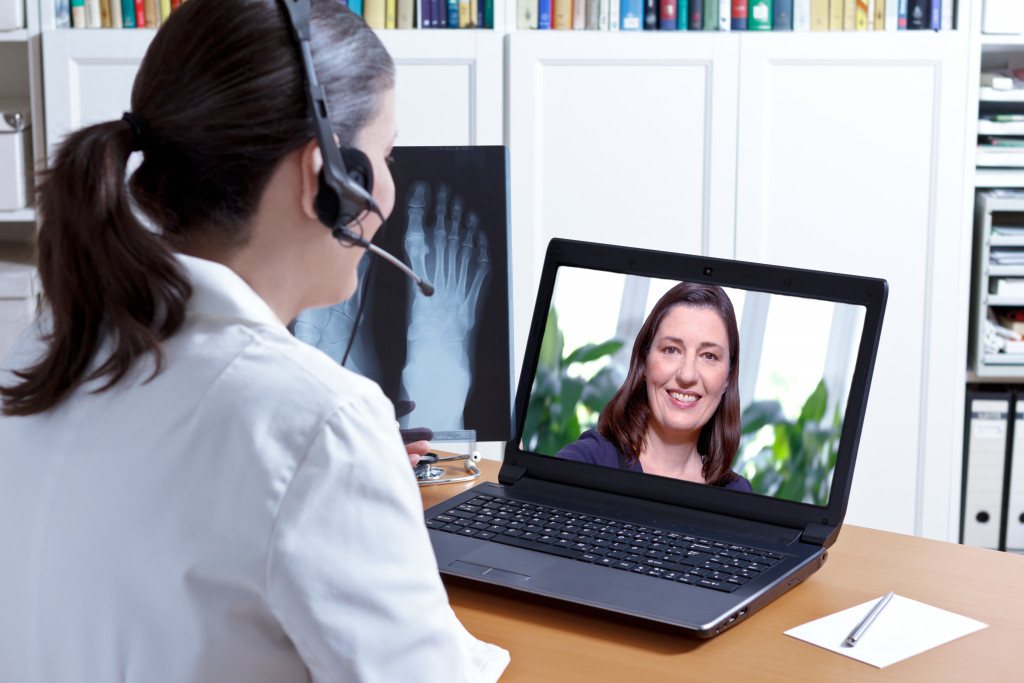Disclaimer: This website provides health information for educational purposes only and is not a substitute for professional medical advice, diagnosis, or treatment. Always seek the guidance of a qualified healthcare provider with any questions you may have.
Technology is revolutionizing the way medical facilities operate. This is because technology can help medical facilities optimize their resources. For example, medical facilities can improve their day-to-day operations and procedures by investing in the right technology.
Additionally, technology can also be used to manage patient data and track supplies. By using technology, medical facilities can run more efficiently and provide better care for their patients. Here are a few ways technology can be used to optimize resources in a medical facility:

1. Improves communication between staff and patients
This can include everything from secure messaging systems to video conferencing tools. Of course, not every patient will want to use these technologies, but they can be beneficial for those who do because they can help reduce wait times and make it easier to get in touch with doctors.
Patient portals are another great way to improve communication. These portals allow patients to view their medical records, lab results, and other information online. This can help them better understand their care and make it easier to communicate with their doctor.
2. Helps manage patient records and medication schedules
Medical facilities generate a lot of data, and it can be challenging to track all of it. Technology can help solve this problem by providing a way to store and manage patient data. This data can be used to track medication schedules, appointments, and other important information.
Electronic health records (EHR) systems and automated medication dispensing systems are two examples of technology that can help manage patient data. EHR systems allow doctors to input patient data into a secure system, while automated medication dispensing systems help ensure that patients receive their medications on time.
3. Reduces the need for paper records
Paper records are becoming a thing of the past. With technology, medical facilities can store patient data electronically, which reduces the need for paper records. This not only saves space but also makes it easier to track and manage patient data.
This can also include using digital forms and signatures. By using digital forms, medical facilities can reduce the need for paper forms. This not only saves time but also reduces the chances of errors. Plus, this practice promotes sustainability by reducing the need for paper.
4. Enhances physical and cybersecurity
Medical facilities have a lot of sensitive data, and it’s essential to keep this data secure. Technology can help by providing enhanced security measures such as firewalls, antivirus software, and encryption. This can help reduce the risk of data breaches and protect patient information.
In addition to physical security, medical facilities also need to worry about cybersecurity. This is because hackers can target medical facilities to steal patient data. To protect against this, medical facilities should use security measures such as two-factor authentication and password management software.
What’s more, if the medical facility uses multi-point ethernet network solutions, they can ensure that all their data is securely transmitted between devices. This reduces the risk of data being intercepted by unauthorized individuals.
5. Helps track supplies and manage budgets
Technology can also be used to help manage budgets and track supplies. For example, inventory management software can help medical facilities keep track of what supplies they have and what they need. This can help facilities stay within their budget and avoid overspending.
In addition, medical facilities can use technology to monitor their energy usage. This information can be used to make changes that will help reduce energy costs. Of course, not every medical facility will need to do this, but it can be a helpful way to save money in the long run.
6. Improves facility management
This can include tracking maintenance schedules and automating building systems. By using technology, medical facilities can improve the way they manage their buildings. This can help save time and money while reducing the chances of problems.
Furthermore, medical facilities can use technology to manage their staff. This can include using scheduling software to keep track of employee shifts or using performance tracking software to measure employee productivity.
7. Facilitates telemedicine
Telemedicine is a growing field, and technology can play a significant role in facilitating it. By using video conferencing software, medical facilities can connect with patients remotely. This can be helpful for patients who live far from the hospital or those who have difficulty leaving their homes.
Of course, telemedicine isn’t suitable for every situation. But it can be a helpful way to provide care for patients who need it. Medical facilities need to invest in the right technology to facilitate telemedicine and improve patient care.
Technology has come a long way, and there are many ways that it can be used to optimize resources in a medical facility. The above are just a few examples. As technology continues to evolve, there will likely be even more ways that it can be used to improve the efficiency of medical facilities.

